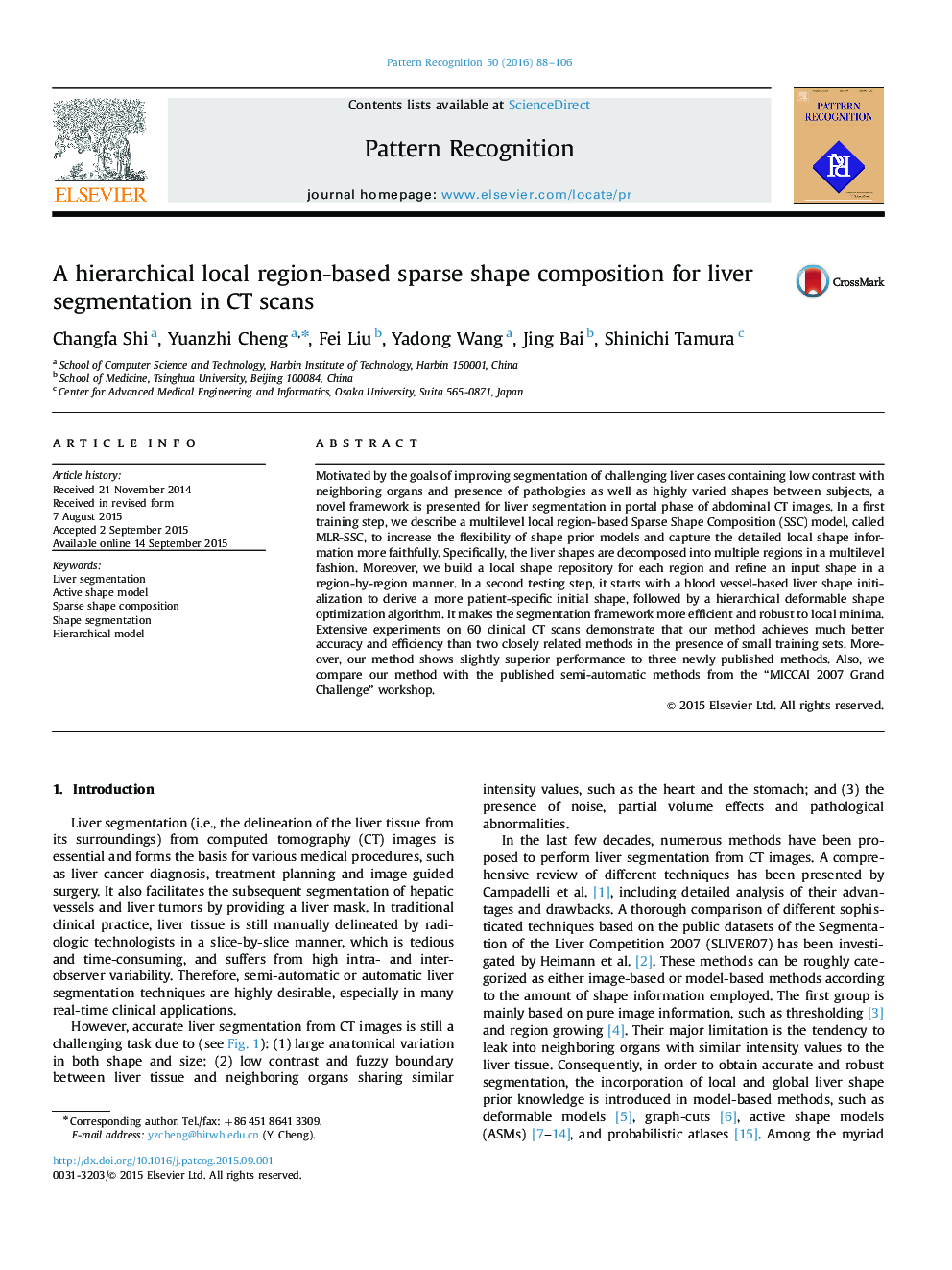| Article ID | Journal | Published Year | Pages | File Type |
|---|---|---|---|---|
| 6940062 | Pattern Recognition | 2016 | 19 Pages |
Abstract
Motivated by the goals of improving segmentation of challenging liver cases containing low contrast with neighboring organs and presence of pathologies as well as highly varied shapes between subjects, a novel framework is presented for liver segmentation in portal phase of abdominal CT images. In a first training step, we describe a multilevel local region-based Sparse Shape Composition (SSC) model, called MLR-SSC, to increase the flexibility of shape prior models and capture the detailed local shape information more faithfully. Specifically, the liver shapes are decomposed into multiple regions in a multilevel fashion. Moreover, we build a local shape repository for each region and refine an input shape in a region-by-region manner. In a second testing step, it starts with a blood vessel-based liver shape initialization to derive a more patient-specific initial shape, followed by a hierarchical deformable shape optimization algorithm. It makes the segmentation framework more efficient and robust to local minima. Extensive experiments on 60 clinical CT scans demonstrate that our method achieves much better accuracy and efficiency than two closely related methods in the presence of small training sets. Moreover, our method shows slightly superior performance to three newly published methods. Also, we compare our method with the published semi-automatic methods from the “MICCAI 2007 Grand Challenge” workshop.
Related Topics
Physical Sciences and Engineering
Computer Science
Computer Vision and Pattern Recognition
Authors
Changfa Shi, Yuanzhi Cheng, Fei Liu, Yadong Wang, Jing Bai, Shinichi Tamura,
